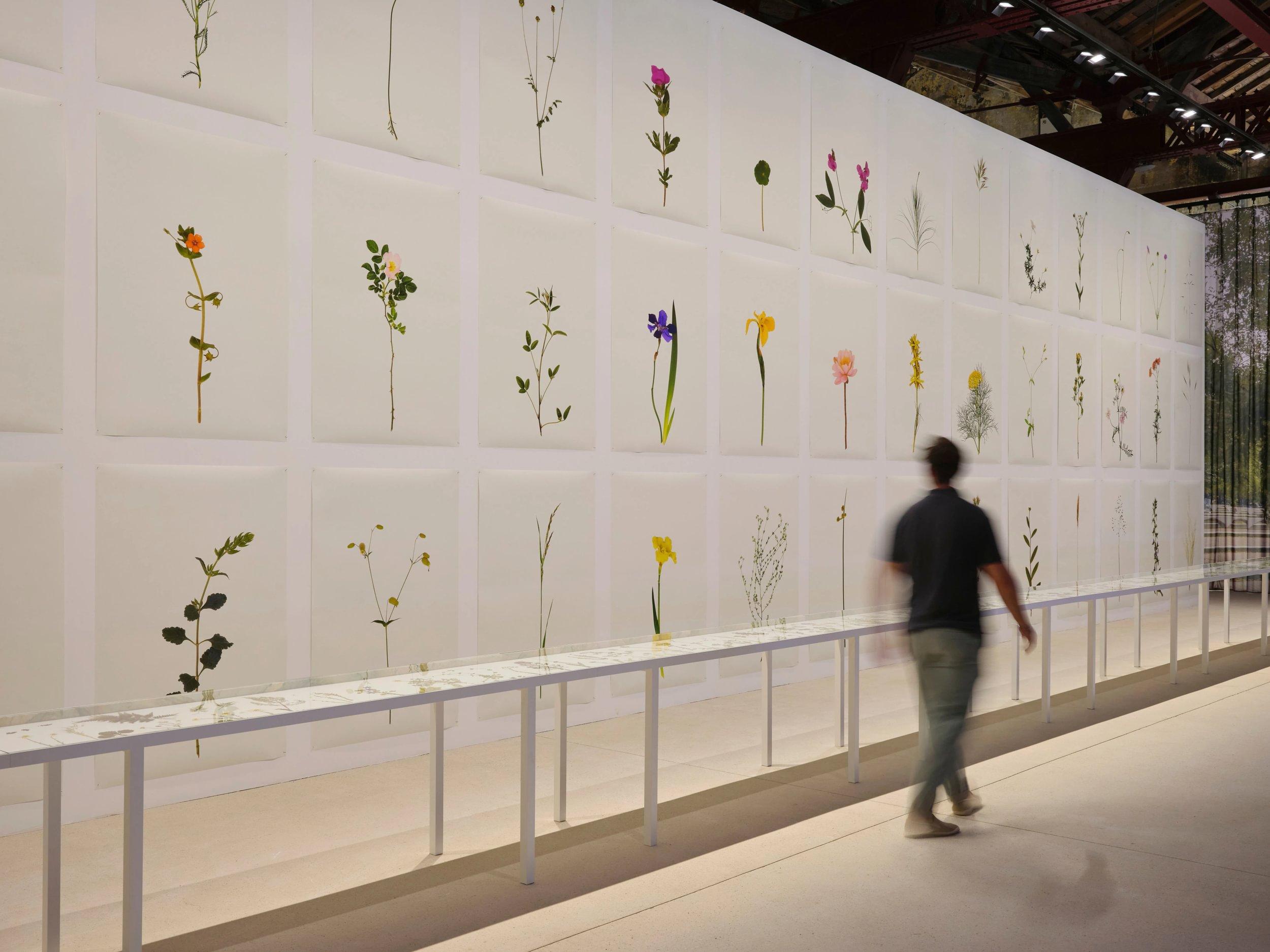Bas Smets is an internationally renowned landscape architect whose practice rethinks what’s possible in the age of climate change.
Les Climats du Paysage, his first exhibition at LUMA Arles, brings together landscape architecture, design and ecological thinking to demonstrate how urban ecologies can be imagined and constructed. The exhibition questions how we can rethink ecosystems and our relationship with the environment. For Smets, the city can be seen as an assemblage of artificial climates: buildings modify wind trajectories and exposure to sunlight, while urban landscapes influence water flow and soil permeability. Landscape architecture thus becomes a tool for creating intentional microclimates, transforming the city into a veritable living laboratory. Based on the detailed study of the processes by which plants and organisms transform their environment over time, it inserts vegetation into the urban fabric as a vector of transformation. These carefully crafted landscapes enable the emergence of new climates and strengthen the resilience of the built environment in the face of the growing climate crisis.
The exhibition opens with a selection of three emblematic projects illustrating how landscape architecture can respond to the multiple challenges posed by climate crises. From improving outdoor comfort and reducing perceived temperatures around Notre-Dame in Paris, to the creation of a riverside park to buffer rising waters in Antwerp, to the transformation of the Parc des Ateliers for LUMA Arles into an autonomous ecology, Bas Smets’ work bears witness to a concept rooted in scientific research and geared towards concrete solutions. Just as natural ecosystems transform the territories they colonize, urban ecologies have the power to profoundly reconfigure the environment. Situated at the fragile intersection between an unstable climate above and a malleable geology below, they are essential living zones. Carefully cultivated and multiplied, these ecologies become resources for creating a sustainable future.
The Parc des Ateliers, an integral part of LUMA Arles, plays an important role in the exhibition. The transformation of this former industrial wasteland into a self-sustaining ecosystem – Bas Smets’ largest climate project to date – is both a feat of engineering and a proposal for a better way of living in the city, redefining the relationship between nature, architecture and urban planning. With a particular focus on ecological resilience, climatic adaptation and the emotional impact of spaces, Smets articulates topography, water management, vegetation and the human experience to design a forward-looking park, a place to experience our coexistence with nature differently. Through the creation of microclimates, his approach relies on an intelligent understanding of the environmental conditions specific to the Arles site – sun exposure, wind circulation, variations in humidity and temperature – to implant specific plant species that work naturally to generate a local microclimate. The plants thus become the real protagonists of the park, which in turn evolves as a tool for environmental performance and positive transformation. It combines technical inventiveness and ecological relevance, in fundamental harmony with human needs.
Les Climats du Paysage draws on two decades of innovative projects and offers an immersion in previously unpublished documents, revealing the design and realization processes of a landscape architecture that has become more essential and urgent than ever.

